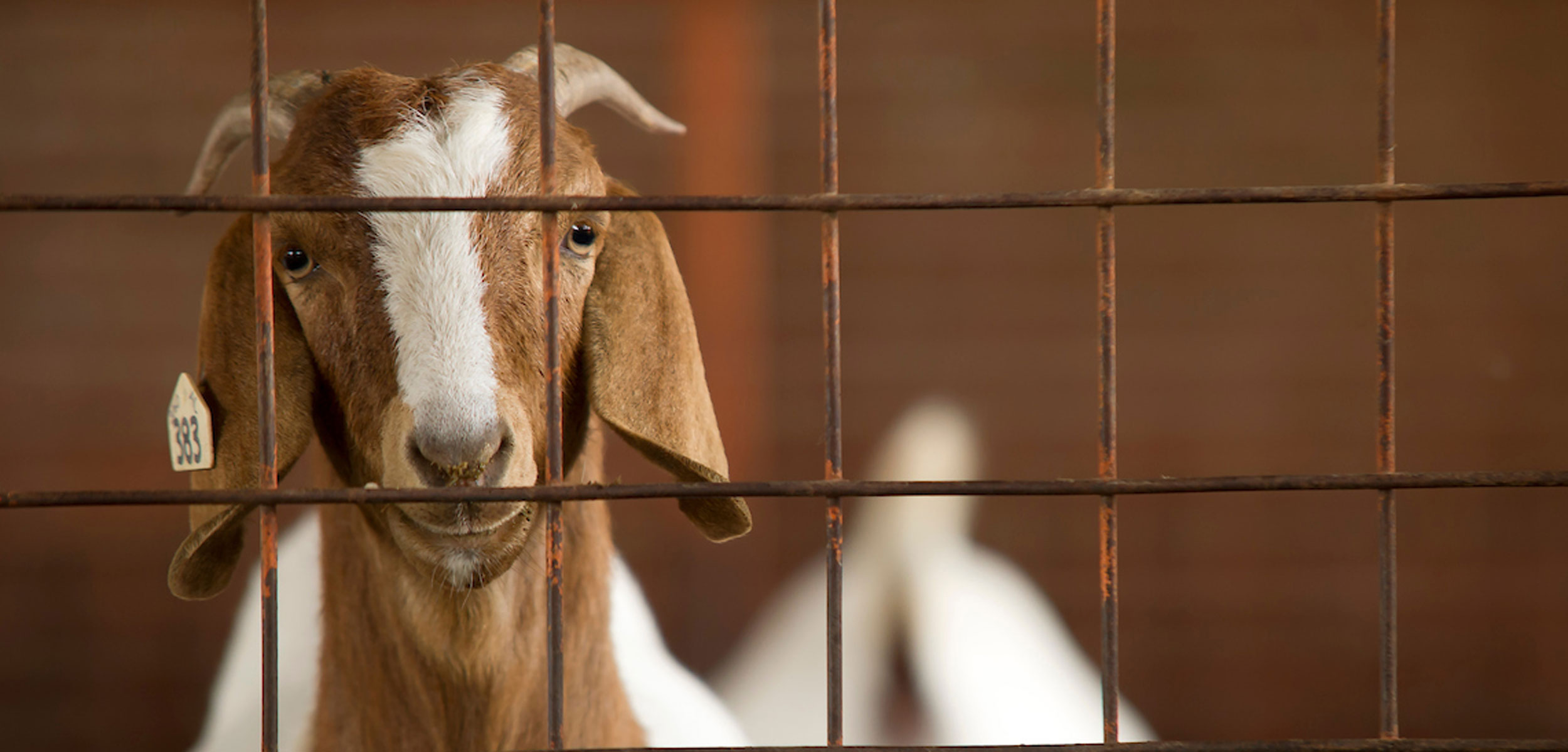
Veterinary Viewpoints: Is my sheep or goat sick?
Wednesday, March 30, 2022
Media Contact: Kaylie Wehr | College of Veterinary Medicine | 405-744-6740 | kaylie.wehr@okstate.edu
No matter how well we take care of our sheep and goats, from time to time animals will become sick. There are a variety of reasons ranging from infectious or noninfectious diseases to improper nutrition or management. It is important to recognize animals that are not feeling well before a disease or condition becomes severe.
How can I tell if my animal is sick?
The best way to detect illness in your sheep or goat is to know how they look, act, eat and play when healthy. This means that you should spend some time each day observing your animals and learning their normal behavior and attitude. Get to know their normal eating and drinking patterns, how they walk and act, the consistency of their feces, and the normal appearance of their hair, skin and body. Use body condition scoring to know if your animals are in good flesh or if they are too thin or fat. Once you know your animal’s normal appearance, it is easier to know when they are acting strangely.
Observe animals early in the morning before they go out to graze, and again in the evening. As you observe your animals, look for some major signs that an animal is acting differently, then, examine those animals more closely. Animals exhibiting the following signs may need closer examination:
- Standing alone
- Poor appetite
- Abnormal conformation
- Hunched up
- Wet tail or rear end — Diarrhea
- Abnormal respiration (best checked in the morning before grazing)
- Grunting
- Grinding teeth
Animals suspected of not feeling well should then be more closely observed. In unrestrained animals, pay attention to:
- Body condition — do animals look fat and sleek or thin and rough?
- Hair coat — is it rough or smooth? Are their indications of external parasites?
- Movement and gait — does the animal favor one leg? Is the animal moving more slowly than normal?
- Lameness — is the animal using all four legs?
- Swelling — are there obvious swellings on the body, legs, neck or jaw? Swelling or infection between the hooves?
- Bloat — does the left side look distended or swollen? Does the animal kick at its belly?
- Respiration — is it faster than normal? Does the animal breathe with difficulty?
- Cough — does a cough appear to be a dry or wet cough?
- Discharge: nasal, eye, vaginal — what is its color and consistency?
What to do if my animal is sick?
If your sheep or goats show change in behavior or illness, it is an emergency. Do not wait. If your examination of the animal makes you think it is ill, it should be restrained, identified, isolated from the rest of the herd, and examined further. Share your detailed observations with your veterinarian. Make sure that items you use in taking care of that animal, such as feed and water buckets, are not used with your other animals. When feeding or caring for your livestock, always feed and care for the sick animal last and wash your shoes and hands afterward. This will help prevent the disease or illness from spreading to your healthy animals.
Some of the following recommended procedures can be done by the owner or producer, or if not comfortable, by your veterinarian:
- Body temperature — Normal 101.5 to 103.5 degrees Fahrenheit.
- Normal respiration — 15 to 30 per minute by watching the ribs cage or thorax early in the morning.
- Feces — are they pelleted or pasty/watery? Do they appear off-color?
- Urination — is the animal urinating normally? Does the urine look cloudy or bloody? Is the amount of urine normal?
- Eyesight — can the animal see normally? Do eyes appear red and runny? White or cloudy eyes?
- Discharge from the nose. Clear or cloudy.
- Sores or ulcers around the lips, gums, tongue etc.
- Check the mucous membranes around the eye. (FAMACHA scoring)
- Swelling around the head, neck, abdomen etc.
- Lameness — one or more limbs. Swelling, fracture, cuts etc.
- Male — any swelling around the preputial sheath.
Knowing how your animals appear and act when healthy will assist you in determining when they are sick. Observe your animals daily so you will be able to recognize abnormal behavior. Contact your veterinarian regarding a herd health program for your flock.
About the author: Dr. Lionel Dawson is a professor in the Department of Veterinary Clinical Sciences at Oklahoma State University’s College of Veterinary Medicine. Dawson specializes in reproduction and works predominantly with small ruminants.
Veterinary Viewpoints is provided by the faculty of the OSU Veterinary Medical Teaching Hospital. Certified by the American Animal Hospital Association, the hospital is open to the public providing routine and specialized care for all species and 24-hour emergency care, 365 days a year. Call 405-744-7000 for an appointment or more information.
OSU’s College of Veterinary Medicine is one of 32 accredited veterinary colleges in the United States and the only veterinary college in Oklahoma. The college’s Boren Veterinary Medical Hospital is open to the public and provides routine and specialized care for small and large animals. The hospital offers 24-hour emergency care and is certified by the American Animal Hospital Association. For more information, visit https://vetmed.okstate.edu/ or call 405-744-7000.
